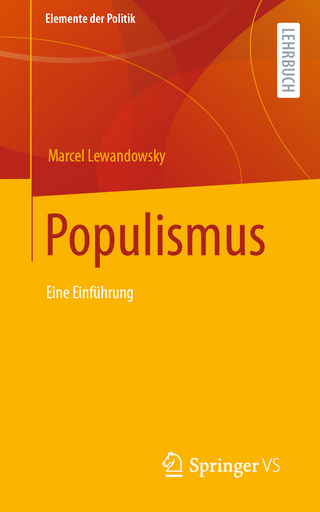
Ukraine’s Nuclear History
Springer International Publishing (Verlag)
978-3-030-90663-4 (ISBN)
This book presents a comprehensive overview of Ukraine's nuclear history, beginning from its experiences within the Russian Empire in the early 20th century, through the Soviet period, to the emergence of Ukraine as an independent state that inherited the world's third-largest nuclear arsenal.
The book discusses the development of the nuclear infrastructure on Ukrainian soil and offers a rich and nuanced background of how Ukraine became an important and integrated part of the Soviet nuclear infrastructure. It further analyzes Ukraine's nuclear disarmament based on extensive primary source material and places the Ukrainian nuclear reversal process in a larger international political context where Russia´s, the United States, and other players´ actions are interpreted in the light of the impact on the current nuclear non-proliferation regime. Finally, the book presents the nuclear-related development after the nuclear disarmament. It describes the integration of Ukraine into the international community and the role of nuclear power in the energy mix of the nation today. Concluding, Ukraine´s adaptation to the new security situation after the Russian annexation of Crimea is described and discussed.
This volume is a must-read for scholars, researchers, students, and policy-makers interested in a better understanding of Ukraine's nuclear history, the political background of the conflict in Eastern Ukraine, as well as of security studies and international relations in general. The work on this book has been supported by the Swedish Radiation Authority (SSM) in the Nuclear History of Ukraine Project (2015-2019).
lt;p>Polina Sinovets is an Associate Professor at the Faculty of International Relations, Political Science, and Sociology of Odesa I.I. Mechnikov University, Ukraine. She is also the Head of the Odesa Center for Nonproliferation, based at Mechnikov University. She previously worked as a senior research associate at Ukraine's National Institute for Strategic Studies. In 2006, she was a research fellow at the James Martin Center for Nonproliferation Studies, Washington DC, USA; a research fellow at the NATO Defence College in Rome, Italy, in 2015; and in 2017/18 a Fulbright Scholar at the James Martin Center for Nonproliferation Studies in Washington DC, USA. She is an expert on nuclear weapons policy and published various articles on the topic.
Chapter 1. Introduction: Understanding the Nuclear History of Ukraine.- Chapter 2. Ukraine's Contribution to The Soviet Union's Nuclear Programme.- Chapter 3. Nuclear Disarmament of Ukraine.- Chapter 4. Nuclear Energy in Independent Ukraine.- Chapter 5. Conclusion: Lessons to Be Learned.
"The real value of this book is that it engages in a thorough and timely manner with some deeply ingrained biases and assumptions." (Jonathan Hibberd, International Affairs, Vol. 99 (1), 2023)
“The real value of this book is that it engages in a thorough and timely manner with some deeply ingrained biases and assumptions.” (Jonathan Hibberd, International Affairs, Vol. 99 (1), 2023)
| Erscheinungsdatum | 17.02.2023 |
|---|---|
| Reihe/Serie | Contributions to International Relations |
| Zusatzinfo | XXI, 264 p. 5 illus. |
| Verlagsort | Cham |
| Sprache | englisch |
| Maße | 155 x 235 mm |
| Gewicht | 444 g |
| Themenwelt | Sozialwissenschaften ► Politik / Verwaltung ► Vergleichende Politikwissenschaften |
| Schlagworte | Budapest Memorandum • Crimea • Disarmament • Eastern Ukraine • Hybrid War • intercontinental ballistic missiles • Nuclear infrastructure • nuclear weapons • Post Soviet Union politics • Russian-Ukrainian relations • Security assurances • Soviet nuclear program • Ukraine's integration into the international community • Ukrainian nuclear reversal process • United States |
| ISBN-10 | 3-030-90663-9 / 3030906639 |
| ISBN-13 | 978-3-030-90663-4 / 9783030906634 |
| Zustand | Neuware |
| Haben Sie eine Frage zum Produkt? |
aus dem Bereich


